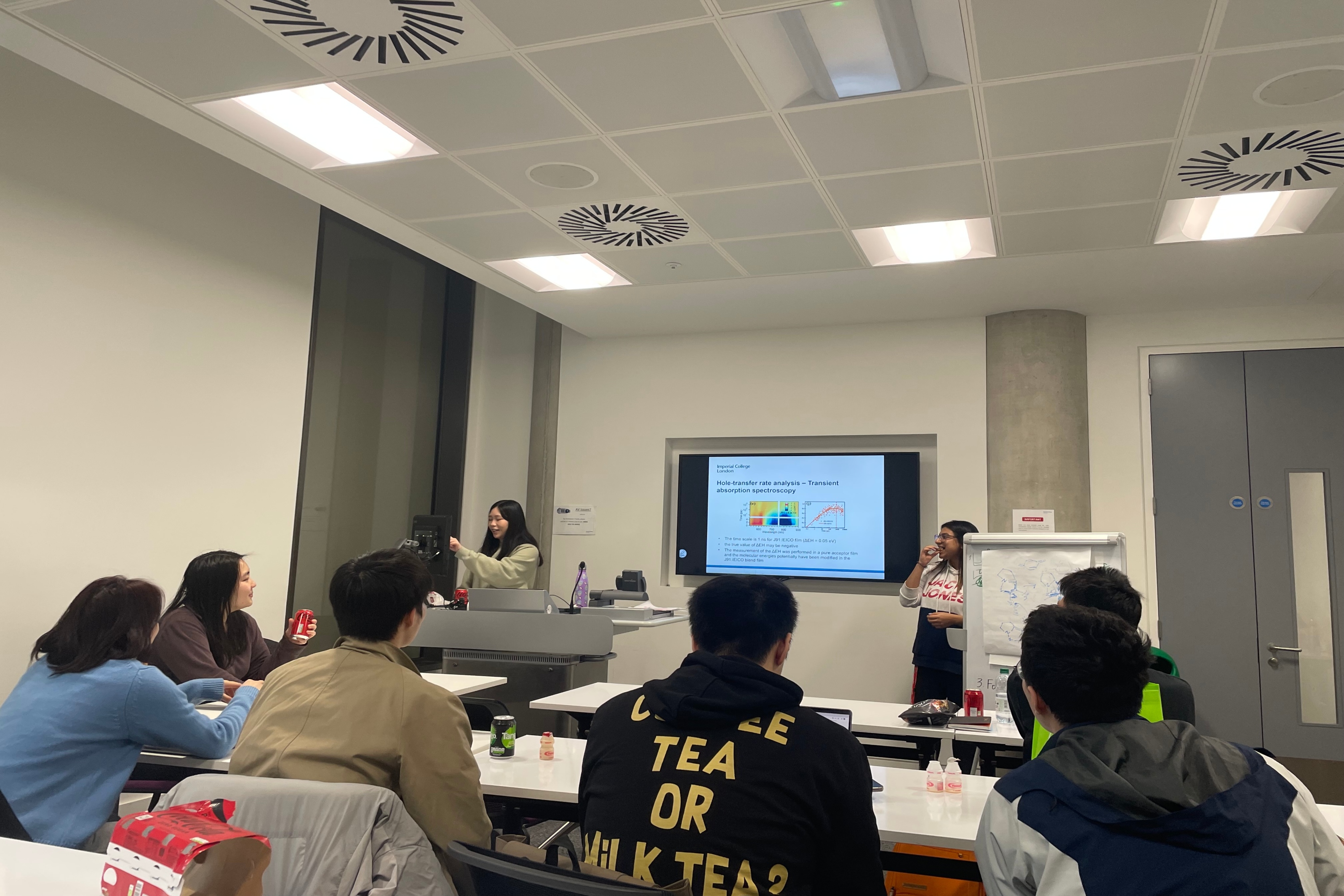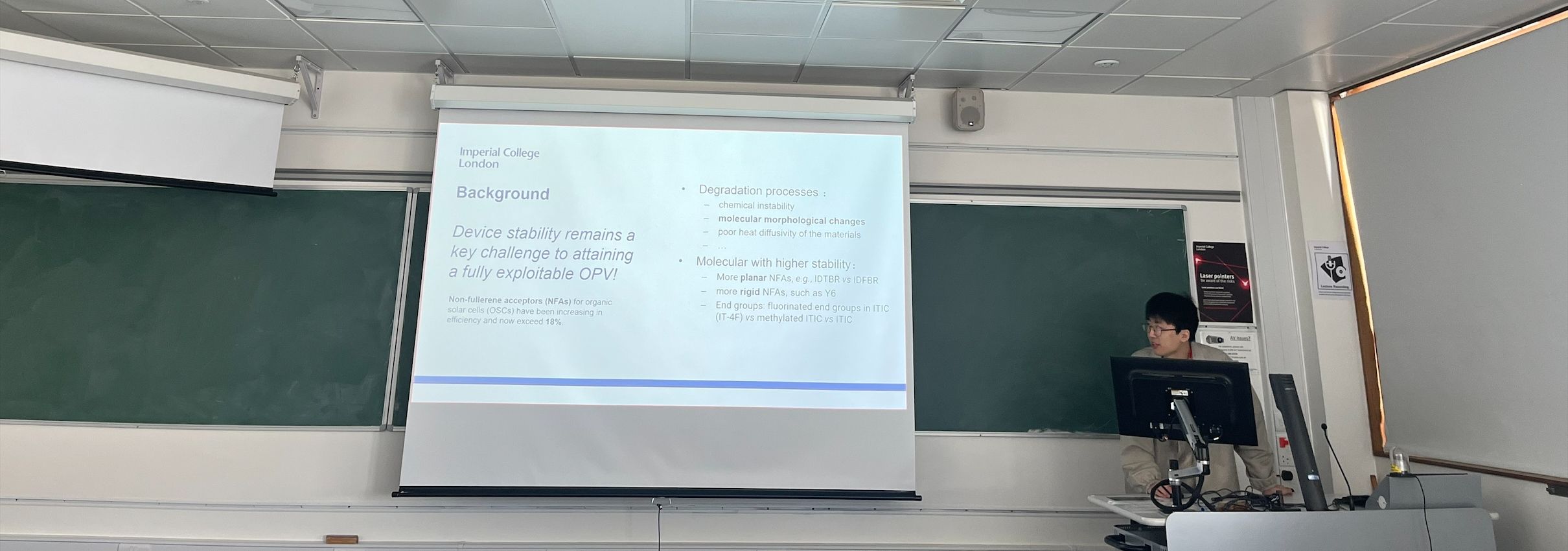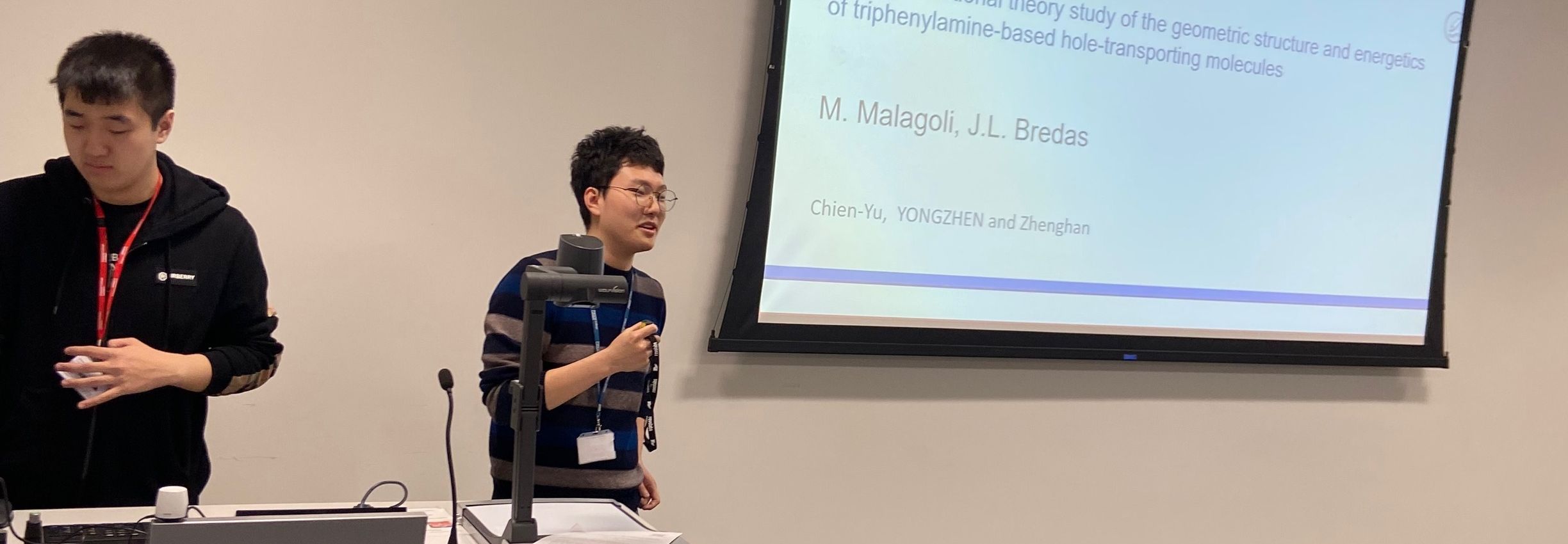In the first term, Journal Club is a fortnightly activity led by each of the research groups involved in the MRes. The transferable skills course, aims to develop presentation skills, whilst encouraging scientific debate, and providing the opportunity to broaden scientific knowledge. At each meeting students discuss a seminal high impact paper that is circulated prior to the meeting.

- 1st RULE: You do talk about JOURNAL CLUB
- 2nd RULE: You DO talk about JOURNAL CLUB
- 3rd RULE: If someone goes limp, falls unconscious or starts snoring wake them up – and choose a more stimulating paper next time
- 4th RULE: Two students will present at a time
- 5th RULE: One paper at a time (mostly) – make it relevant to you
- 6th RULE: You will not talk about review papers
- 7th RULE: Discussions will sometimes exceed an hour – you will ask questions
- 8th RULE: If this is your first time at JOURNAL CLUB, you HAVE to present sometime during the term
Students have been paired and asked to find one or two interesting papers significant for their projects to discuss at the journal clubs. Senior PhD student/researcher from their groups are welcome to the sessions to help facilitate the discussions.
- Reehab, Jahangir + Zhang, Xinyu – (THz characterisation of charge carrier properties and electrolyte interactions for improved organic water-splitting photocatalysis + Near-infrared photodetectors with above 100% quantum efficiency). Students chose Hole Transfer Originating from Weakly Bound Exciton Dissociation in Acceptor−Donor−Acceptor Nonfullerene Organic Solar Cells for discussion
- Kuo, Josh + Lyu, Yongzhen + Li, Zhenghan – (Enabling the modelling of the kinetics of electrochemical transformation under potential control with hairy probes formalism + Probing efficiency of photochemical solar energy conversion using luminescence measurements and modelling + Simulating charge transfer and recombination at an upconverting organic semiconductor interface). Students chose Density Functional Theory Study of the Geometric Structure and Energetics of Triphenylamine-based Hole-transporting Molecules for discussion
- Chen, Shiyu + Niu, Zanyao – (Stability of organic semiconductors for photovoltaic applications + Overcoming the photostability of organic semiconductors via nature-inspired antioxidants). Students chose Selenium-Substituted Non-Fullerene Acceptors: A Route to Superior Operational Stability for Organic Bulk Heterojunction Solar Cells for discussion
- Peng, Edmund + Huo, Muzhi – (Silicon-based molecular diagnostics, Metamaterial by soft 3D digital optical lithography for quantum technologies). Students chose Rapid Prototyping of a Dammann Grating in DMD-Based Maskless Lithography for discussion
- Huang, Sean + Weitao Jia – (Comparing transient photovoltage with intensity modulated photovoltage spectroscopy in perovskite solar cells + IR detection enabled by solution processed organic phototransistors). Students chose UV-sensing Organic Phototransistor Memory Devices with a Doped Organic Polymer Electret Composed of Triphenylamine-based Aggregation-induced Emission Luminogens for discussion
- Li, Xinran + Tsai, Ellen – (The transport mechanism of printable inks based on graphene and 2D materials for wearable and stretchable electronics + Interfacial engineering in solid state batteries to suppress Li dendrite growth). Students chose
An advanced lithium-ion battery based on a graphene anode and a lithium iron phosphate cathode for discussion






.jpg)